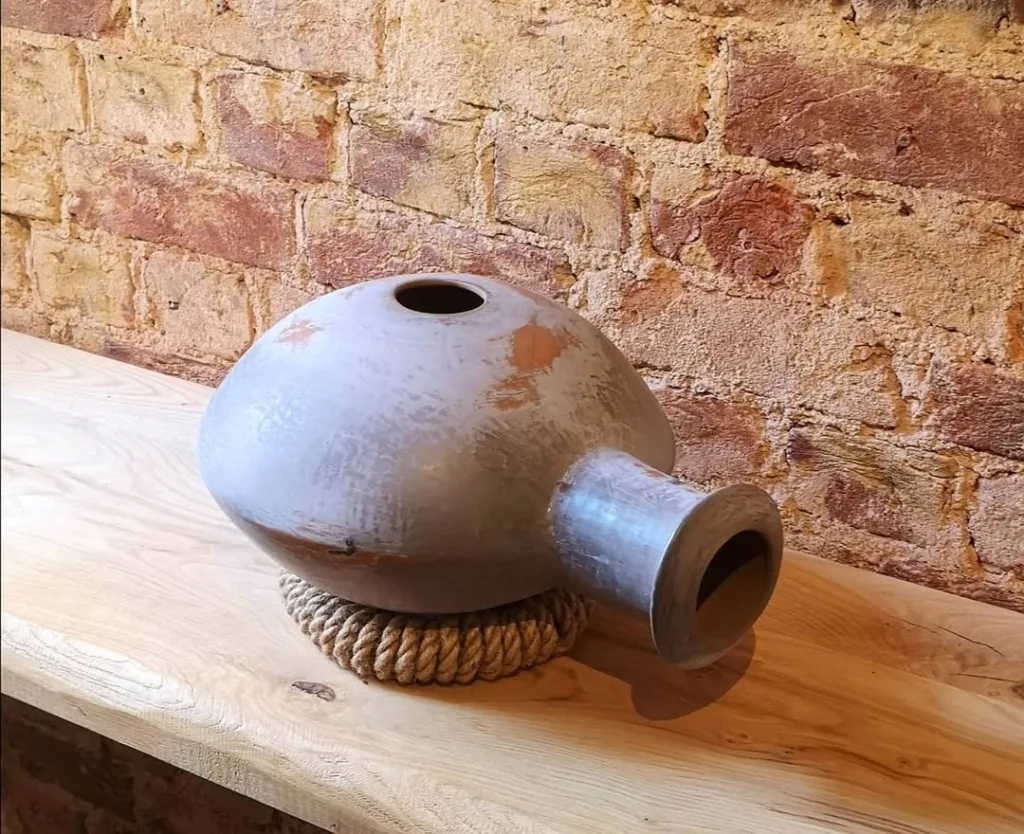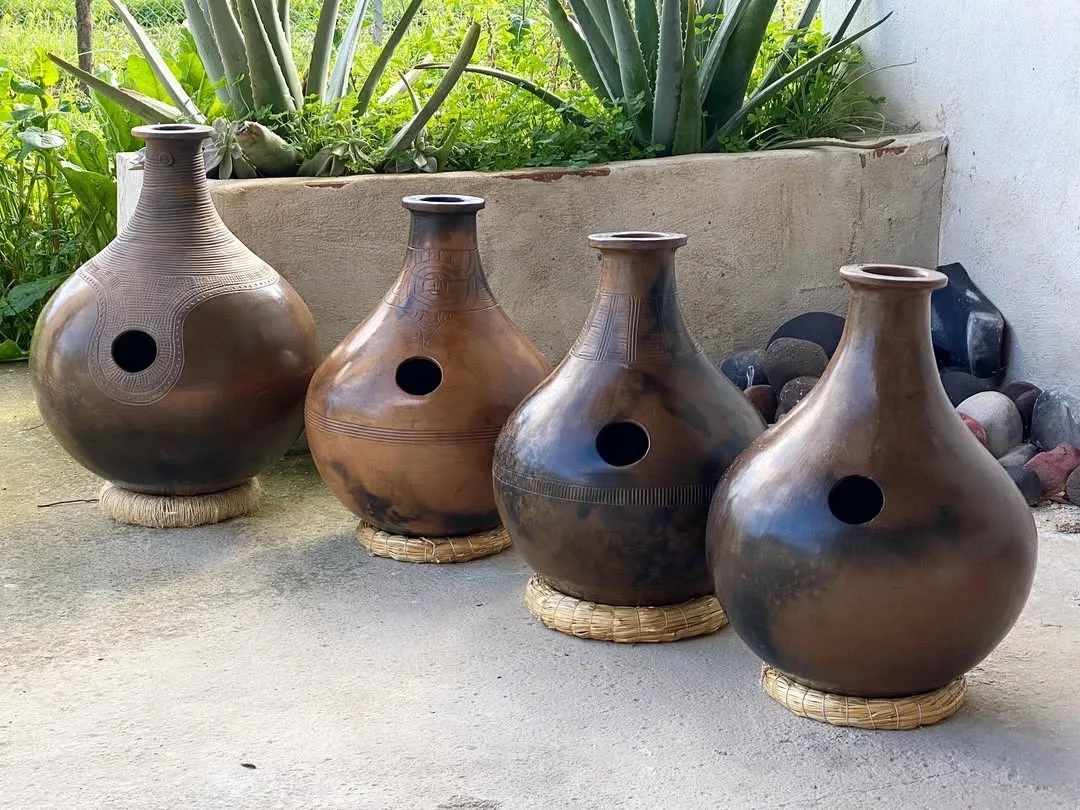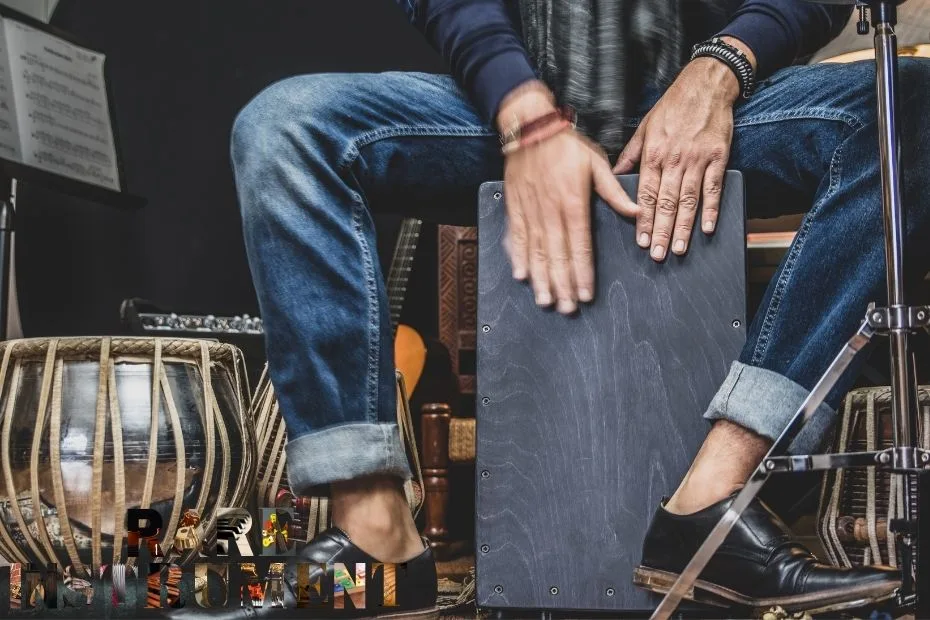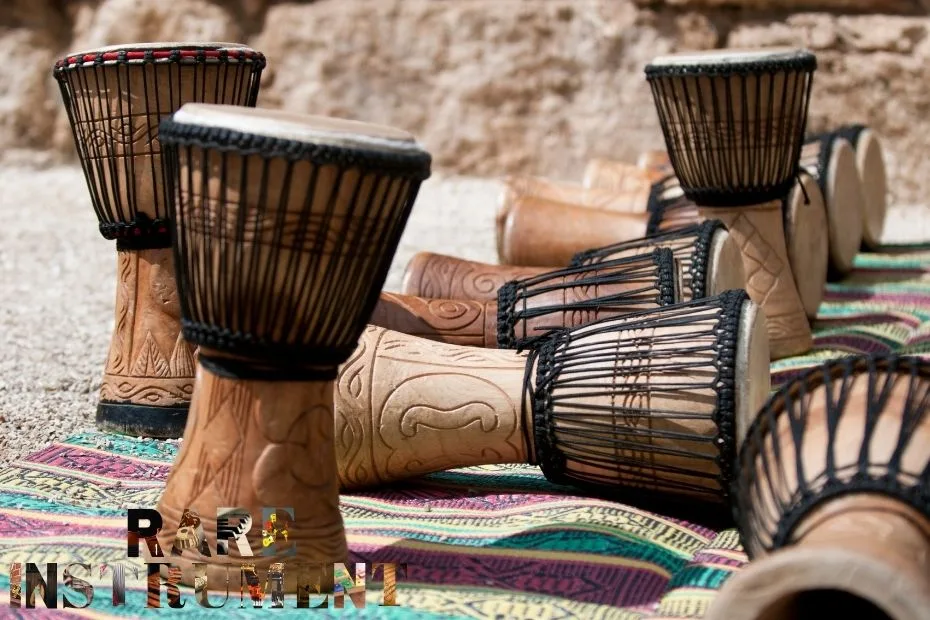The Udu Drum is a remarkable percussion instrument that originated in Nigeria, West Africa. Traditionally played by the Igbo people, this clay pot drum produces a unique blend of melodic and percussive tones. Today, the Udu has gained international recognition, appearing in world music, jazz, fusion, and even electronic compositions. Its distinctive sound, created by both hand strikes and the resonance of its air hole, makes it one of the most versatile instruments in the percussion family.
Udu Drum: Complete Guide
| Aspect | Description |
|---|---|
| Origin | Nigeria (Igbo people), specifically the Igbo women of the Hausa tribe |
| Name Meaning | “Udu” means “pottery” or “vessel” in the Igbo language |
| Traditional Construction | Hand-built clay pottery with a round body and one or more openings |
| Modern Variations | Sometimes made from synthetic materials, with added features like tuning mechanisms |
| Playing Technique | Played with fingers and palms; sound produced by striking the openings and body |
| Sound Characteristics | Deep, resonant bass tones with watery, percussive sounds |
| How Sound is Produced | Helmholtz resonance principle – air moves through the chamber creating deep tones |
| Traditional Use | Originally water pots; used for communication, ceremonies, and social gatherings |
| Modern Usage | World music, percussion ensembles, studio recording, and solo performances |
| Notable Features | Unique bass tones unobtainable with other percussion instruments |
| Playing Position | Typically held in the lap or between the knees; sometimes placed on a stand |
| Types of Udu Drums | Traditional Nigerian Udu, Udu-Zarb (combined with Persian tonbak), Double Chamber Udu |
| Notable Players | Frank Giorgini (pioneered modern udu designs), Udu women of Nigeria |
| Maintenance | Fragile due to clay construction; requires careful handling and storage |
| Cultural Significance | Represents the transformation of everyday objects into musical instruments |
| Recording Applications | Valued in studios for its unique bass frequencies and organic sound quality |
History and Cultural Roots
The word “Udu” means “pot” in the Igbo language. Originally, Udu drums were water jugs that women used in daily life, later adapted into musical instruments for ceremonies and spiritual practices. Over time, the instrument became an essential part of traditional African music, symbolizing both rhythm and life itself. Its deep bass tones and airy resonances continue to echo cultural traditions while also inspiring modern musicians worldwide.
Construction and Design
The Udu Drum is typically made from clay or ceramic, giving it a warm, earthy resonance. Modern variations may use reinforced materials like fiberglass, but authentic instruments are almost always hand-crafted by artisans. The body is shaped like a pot with one large opening at the top and a smaller hole on the side, which is crucial for its unique sound production. The surface is smooth, allowing for hand-slapping techniques, while the air hole creates bass-like vibrations when covered and released.
How to Play the Udu Drum
Unlike traditional drums, the Udu is not played with sticks. Instead, players use their hands and fingers to strike, tap, and rub different areas of the pot. The two primary sound categories are:
- Bass tones – produced by covering and releasing the side hole, creating deep resonant sounds.
- Slaps and taps – made by striking the body with the palm or fingers for sharper percussive accents.
Skilled percussionists often combine both techniques, producing rhythmic patterns that are both melodic and hypnotic.
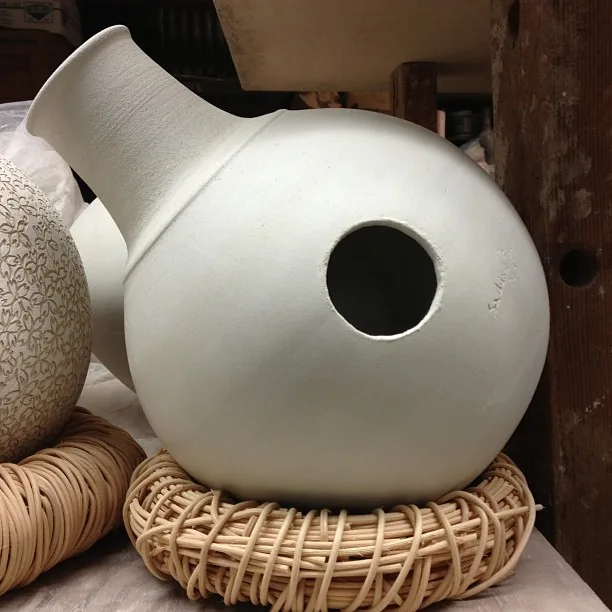
Care and Maintenance
Since most Udu drums are made of clay, they require careful handling. Here are a few tips:
- Avoid dropping or exposing it to sudden temperature changes.
- Clean with a dry or slightly damp cloth—never soak in water.
- Store in a padded bag or secure case when not in use.
- If cracks appear, use ceramic repair glue for small fixes, but professional restoration is recommended for larger damages.
Modern Applications
While the Udu remains a staple in African folk traditions, it has found its way into jazz, ambient, fusion, and electronic music. Many percussionists appreciate its ability to blend melodic bass tones with sharp percussive slaps, making it suitable for both solo and ensemble performances. Its deep resonances often act as a bridge between rhythm and melody in world music compositions.
Accessories and Amplification
To enhance the playing experience, musicians often use accessories such as:
- Microphones or Pickups – to amplify the subtle bass tones.
- Stands – to stabilize the instrument during live performance.
- Padded cases – for safe transport, especially for clay models.
FAQ – Udu Drum
Q: Is the Udu Drum difficult to learn?
A: No, basic rhythms can be picked up quickly, but mastering the air hole techniques requires practice.
Q: Can the Udu Drum be tuned?
A: Unlike frame or hand drums, the Udu does not have tunable heads, but tone can vary depending on hand position and covering the hole.
Q: Is the Udu only used in African music?
A: While its roots are African, the Udu is now used in jazz, world music, and contemporary experimental genres.
References:

